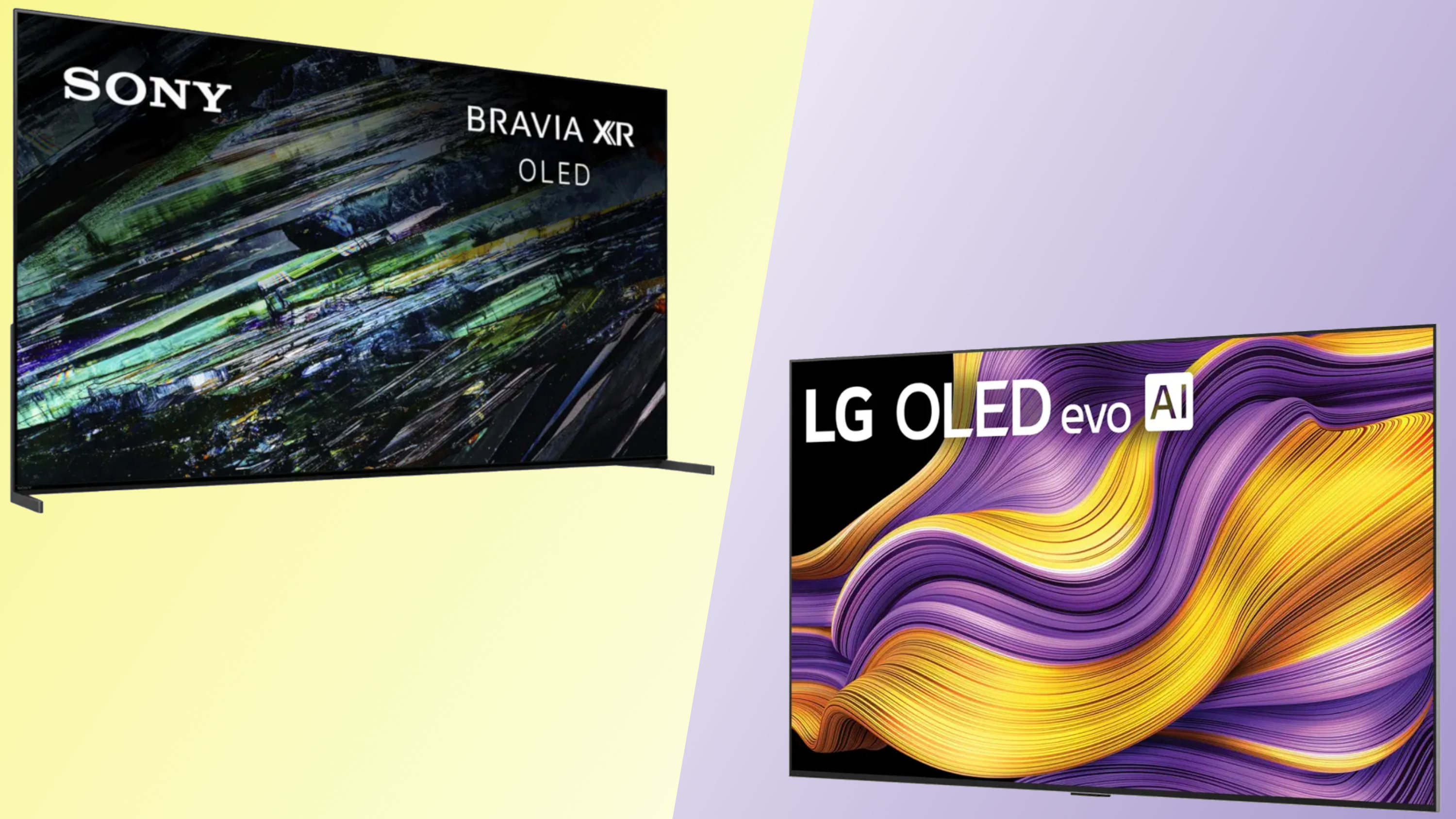
Welcome to a battle between two titans. At the tippy-top of LG’s latest TV lineup is the flagship LG G5. It’s one of a handful of OLED TVs in 2025 that leverages LG Display’s all-new, 4th-generation OLED panel.
Meanwhile, the Sony A95L — one of the best OLED TVs ever made — is in its second year on shelves (in large part because there’s simply no reason to stop selling a TV this good). The A95L blends the benefits of OLED with quantum dot-enhanced color for a best-of-both-worlds approach.
As you might imagine, there are perks to both of these souped-up OLED displays, and some sizable differences when it comes to performance and features. I’m familiar with both sets, so here’s how the A95L and the G5 compare, and which is the best for movies, streaming and more.
Sony A95L vs LG G5: Specs compared
First, let’s talk about screen size availability. The G5 comes in a couple of additional sizes, but they’re the largest of the series: 83 and 98 inches. There’s a small sliver of shoppers who will have no choice but to go with the G5 if they’re choosing between these two TVs and want something above 77 inches.
In terms of specifications, the G5 supports 4K gaming at 165Hz, but the A95L is capped at 120Hz. You really don’t need to concern yourself with this difference unless you’re planning on using one of these TVs with a gaming PC, as current-generation consoles top out at 120Hz for 4K games.
Dolby Vision support is in the cards for both of these TVs, though HDR10+ is absent. I wouldn’t worry too much about this, however, as Dolby Vision is the more popular format across various streaming platforms.
The A95L supports ATSC 3.0 while the G5 does not, so if you’re hoping to pipe in 4K over-the-air broadcasts, the A95L is the only way to go.
But perhaps the biggest difference between their respective spec sheet has to do with HDMI. All four of the G5’s primary inputs are HDMI 2.1-compatible, while only two such ports exist on the A95L (the remaining two being HDMI 2.0). Gamers should take note of this, and I’ll get into the reasons in a second.
Sony A95L vs LG G5: Design
You’ll want to pay close attention to how these two TVs are designed, as their approach will likely play a big role in deciding which is right for you.
Last year, LG included a stand with 55- and 65-inch versions of its G Series OLED. The all-new G5, however, doesn’t come with a stand at any size point, as LG assumes that most people plan on taking advantage of the TV’s gap-free, wall-mounted design.
You can check out the G5’s separately sold stand in the photo above. It’s a sturdy, pedestal-style stand that screws into the back of the panel. It does, however, come at an additional cost.
The A95L, on the other hand, puts flexibility at the forefront. It comes with a narrow pair of feet that can be attached to the TV in three different ways: a wide-set configuration that rests the panel directly on its surface, a centered setup that places the feet near the center of the panel and a wide-set configuration that lifts the panel by several inches (seen below).
While it’s tough to understate just how cool the G5 looks in its wall-mounted formation, there’s no denying that more people are in the market for a TV with a stand, particularly one that offers multiple configurations to accommodate various home theater setups.
The caveat here is that the G5 might just be the best-looking wall-mounted TV on the market right now. If you have your heart set on putting your next TV on the wall, the G5’s design approach is more closely aligned with your needs.
Winner: Sony A95L
Sony A95L vs LG G5: Performance
Before we dive into which of these TVs is the better performer, let’s compare their test results.
Thanks to its 4th-generation OLED panel from LG Display, the G5 is one of the brightest OLEDs we’ve ever tested, rivaling only QD-OLEDs from Sony and Samsung. When you factor this in with the incredible contrast OLED displays are famous for, you get a dazzling picture with an unparalleled sense of depth.
And, at well over 2,000 nits, the G5’s blistering HDR brightness is arguably the most impressive aspect of its performance.
But the A95L — itself a QD-OLED TV — is no slouch. Given the unparalleled contrast of OLED displays, the A95L makes out perfectly well with over 1,200 nits of HDR highlight brightness.
However, the G5 has a considerable edge when it comes to average picture brightness. In other words, the entire screen is brighter than the A95L during most content — not just small, concentrated highlights. Daytime TV, sports broadcasts, YouTube videos, you name it — the G5 is going to pack more of a punch.
For this reason, the G5 has a sizable advantage over the A95L for folks who favor daytime viewing (or for viewers with brighter-than-average living spaces).
There are areas of performance where the A95L bests the G5, however. The A95L’s incorporation of quantum dots (microscopic, color-boosting nanocrystals) allows for some of the purest color I’ve ever seen on a TV. The G5 offers better color volume than any LG OLED to date, but it doesn’t quite reach the A95L’s incredible 89% coverage of the Rec.2020 color gamut.
And then there’s the A95L’s secret sauce: Sony’s superb picture processing. I talk about this often when covering Sony TVs, but the brand’s attention to detail is second to none. Older, upscaled content often looks immaculate, motion handling is smooth and rarely do I spot quirks like color banding.
LG is certainly closing the gap in recent years; the G5 offers excellent upscaling and a clean, cinematic presentation. That said, I still find the A95L to be better suited at zshushing up sub-4K content and, in general, minimizing minor, visual artifacts.
All of this adds up to a TV that is in its element when showcasing movies in a darkened room. If you’re the type of A/V enthusiast who’s keen on crafting a modern home theater with a carefully calibrated experience, the A95L is closer to what you’re looking for.
But the G5 is more of a crowd-pleasing, Jack-of-all-trades sort of TV — bright, colorful and excellent in all scenarios. I’m a huge fan of the A95L’s attention to detail, but the G5 muscles its way into a win for the performance category.
Winner: LG G5
Sony A95L vs LG G5: Smart platform and features
Before we delve into features, let’s discuss software. I much prefer the Google TV experience on the A95L to the webOS experience on the G5, and there’s a good chance that you will, too.
While both platforms are peppered with ads and banners for recommended content, Google TV’s user interface is easier to navigate. The newest version of webOS, while snappy, is more cluttered, with certain menus tucked further away from the home screen.
But software is just one piece of the puzzle. The G5 is practically overflowing with gaming features to go along with its full slate of high-bandwidth, HDMI 2.1 inputs.
As mentioned, the G5 supports 4K gaming up to 165Hz across all of these ports. You’re getting nearly every gaming-related enhancement under the sun. And, while the A95L supports many of these enhancements (like ALLM and VRR), they’re limited to just two HDMI 2.1 inputs, and one of them will be lost the moment you link up an eARC-enabled soundbar to the A95L.
If you consider yourself to be more than just a casual gamer, you ought to weigh the G5’s gaming benefits heavily. Both of these TVs come with all sorts of audio- and streaming-related bells and whistles, but only one of them is a gaming powerhouse.
Winner: LG G5
Sony A95L vs LG G5: Verdict
The A95L and the G5 are neck and neck competitors when it comes to watching movies in the dark, and under these circumstances, I may even give the edge to the A95L thanks to its added color volume and pristine picture processing.
But there’s no denying the G5’s punchier picture, and it’s a better fit for the average person who watches movies and shows on and off throughout the day.
Beyond performance-related considerations, there’s also the matter of price. The A95L has been enjoying its status as one of the best TVs on shelves for a few years now, and since so much time has passed since its debut, you can find some seriously sensationally deals on this Sony.
Right now, the 65-inch A95L is $1,997 at Best Buy. That’s over $1,500 off its original, sky-high price tag.
Meanwhile, the 65-inch LG G5 is $2,899 at Amazon. That’s the lowest price I could find at the time of publishing.
The G5’s higher sticker price is worth securing a brighter picture along with better gaming features, but don’t discount the A95L’s ability to shine in a proper home theater.
More from Tom’s Guide



